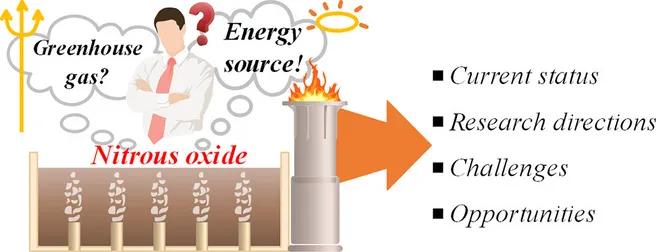Nitrous oxide (N2O) has been studied intensively in wastewater treatment as a detrimental greenhouse gas. However, increasingly more studies have adopted a contrasting objective, recovering N2O from wastewater as an energy resource. This article critically reviewed and analyzed the current status of N2O recovery research in wastewater treatment, to identify knowledge gaps and guide future research. Overall, N2O recovery is a promising research direction while still in active development. At present, unstable nitritation, the low energy potential, and potential environmental risks of N2O harvesting render the recovery of N2O from mainstream wastewater technically and economically challenging. High-strength wastewater treatment is more favorable for N2O recovery due to the high energy potential, established nitritation approaches, and significant carbon/aeration savings. The coupled aerobic–anoxic nitrous decomposition operation (CANDO) process is currently the most investigated and promising N2O recovery process. Nevertheless, more research is needed for its implementation on a large scale. Research opportunities for the CANDO process have been identified in this paper. Meanwhile, N2O recovery via autotrophic denitritation is a more recent concept, with limited studies hitherto. More experiments are needed to investigate its technological feasibility. Furthermore, other novel N2O recovery processes, e.g., truncated denitrification and chemical oxidation, should also be explored to facilitate the recovery of N2O from wastewater.
Duan et al. 2020
New Research Article by Duan et al. 2021
